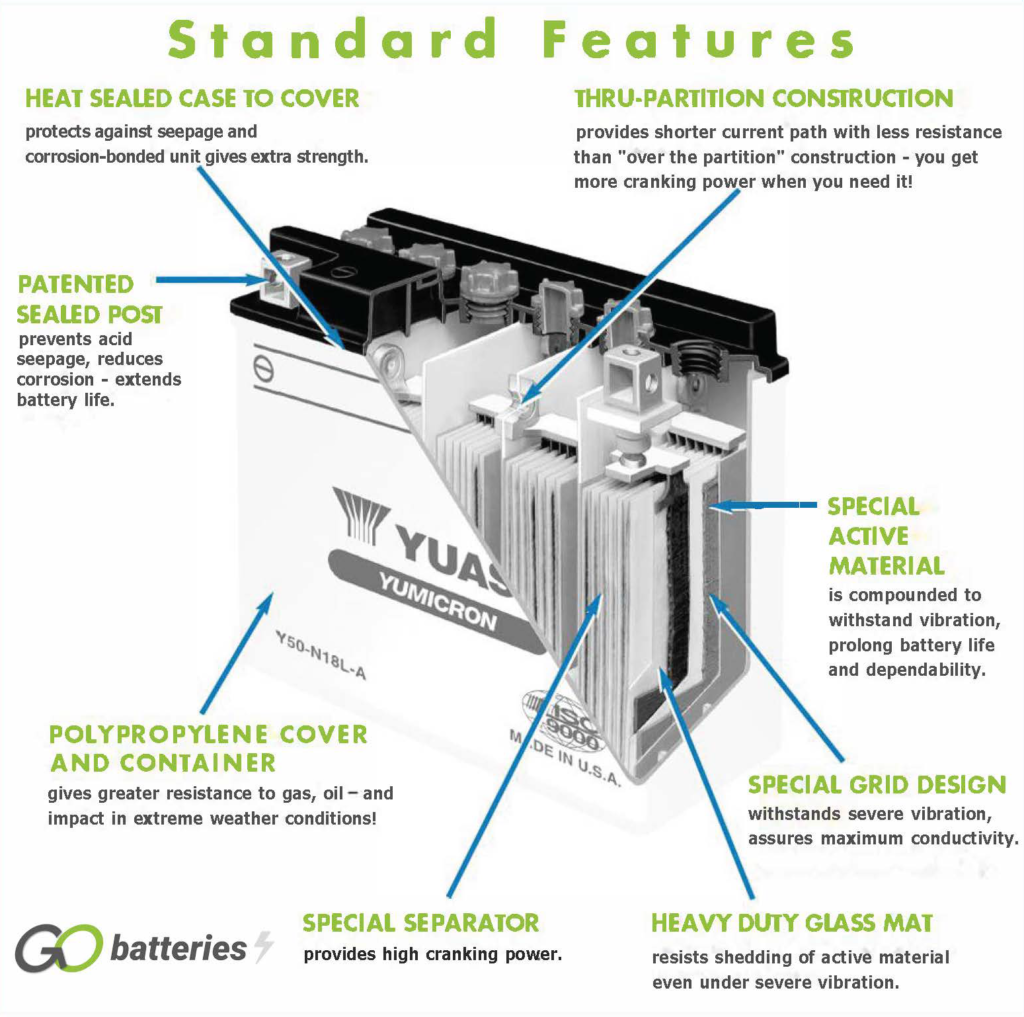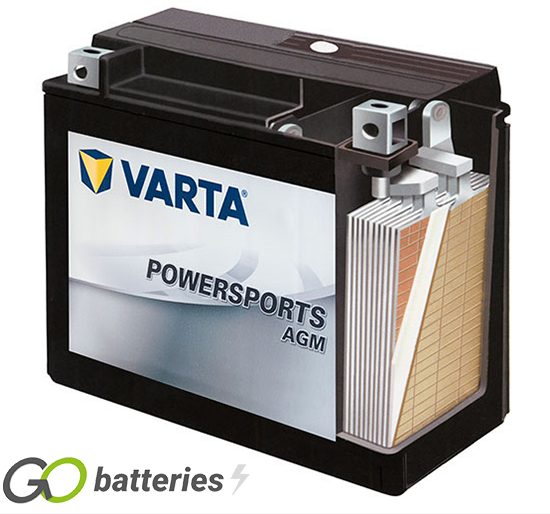
What is a Motorcycle Battery?
A Motorcycle Battery is a battery designed primarily for engine starting. Unlike other types of battery (such as Marine batteries or Leisure batteries) which are designed to perform best under slow drain situations, a motorcycle battery must be able to produce a high burst of energy to engage the starter motor and turns the fly wheel which will allow the motorcycle engine to start.
As the motorcycle battery is the heart of your machines electronics system, we recommend fitting the highest quality motorcycle battery that your budget will allow, thus getting the ultimate performance from your motorcycle over the longest period possible.
Motorcycle Battery Technologies
Wet Batteries – A traditional motorcycle battery is known as a wet (or flooded) battery. In its basic form, this is a strong plastic (usually ABS) container which contains lead plates submerged in a dilute liquid electrolyte solution (acid). These must be kept upright to avoid spillage. Batteries have been produced in this way for many, many years.  A 12 volt conventional starter battery consists of 6 cells connected in series, each with a nominal voltage of 2V (volts), which results in a voltage of exactly 12.72V when the battery is fully charged. Older motorcycles are also popular with 6 volt batteries and as such the above is similarly true, they consist of 3 cells connected in series, each with a nominal voltage of 2V, which results in a voltage of 6.36V when the battery is fully charged. The capacity and the cold start capability of the battery results from the number of plates per cell.
A 12 volt conventional starter battery consists of 6 cells connected in series, each with a nominal voltage of 2V (volts), which results in a voltage of exactly 12.72V when the battery is fully charged. Older motorcycles are also popular with 6 volt batteries and as such the above is similarly true, they consist of 3 cells connected in series, each with a nominal voltage of 2V, which results in a voltage of 6.36V when the battery is fully charged. The capacity and the cold start capability of the battery results from the number of plates per cell.
Rule of thumb: The more plates which a cell contains, and therefore form a larger surface, the larger the cold start power (CCA) which the battery can deliver. However, if the space in the cell is used for fewer, but thicker plates, the cycle stability is increased. This means that the battery is designed for a higher charge throughput (continual charging and discharging process).
The cells are contained in a casing which is made from acid-resistant plastic (polypropylene). In a conventional SLI battery, this is closed with a cover with a labyrinth system which prevents the battery fluid from escaping and separates the liquid from gas.
Early batteries had screw plugs which enabled them to be topped up with distilled water. Modern batteries are completely maintenance-free. Water does not need to be, and must not be topped up. Although AGM batteries still have “one-way plugs”, these must not be opened under any circumstances.
AGM Batteries – (“AGM” stands for “Absorbent Glass Mat”) batteries were developed in the 1980’s and feature a fibreglass matting which surrounds the lead plates with the electrolyte absorbed within it. The major benefits are that the battery becomes spill proof (and so can be theoretically mounted in any position), has far better vibration resistance and is better able to deep cycle (survive multiple deep discharging and recharging). They are also (for various technical reasons) more reliable than their wet counterparts, the downside is that AGM batteries are more expensive to produce and to purchase.
Maintenance-free and leak-proof AGM batteries are powerful batteries for modern motorcycle electrical systems and have very good cold start characteristics. The precision assembly which creates a uniform book of plates that are tightly compressed in each cell, gives faster charges, increased cycles, greater vibration resistance and hold their charge very well.

Only replace an AGM Battery with an AGM Battery
Motorcycles with modern technologies and equipment tend to be supplied with an AGM battery and as such must be replaced with an AGM battery. Only an AGM battery may be used as a replacement.
















